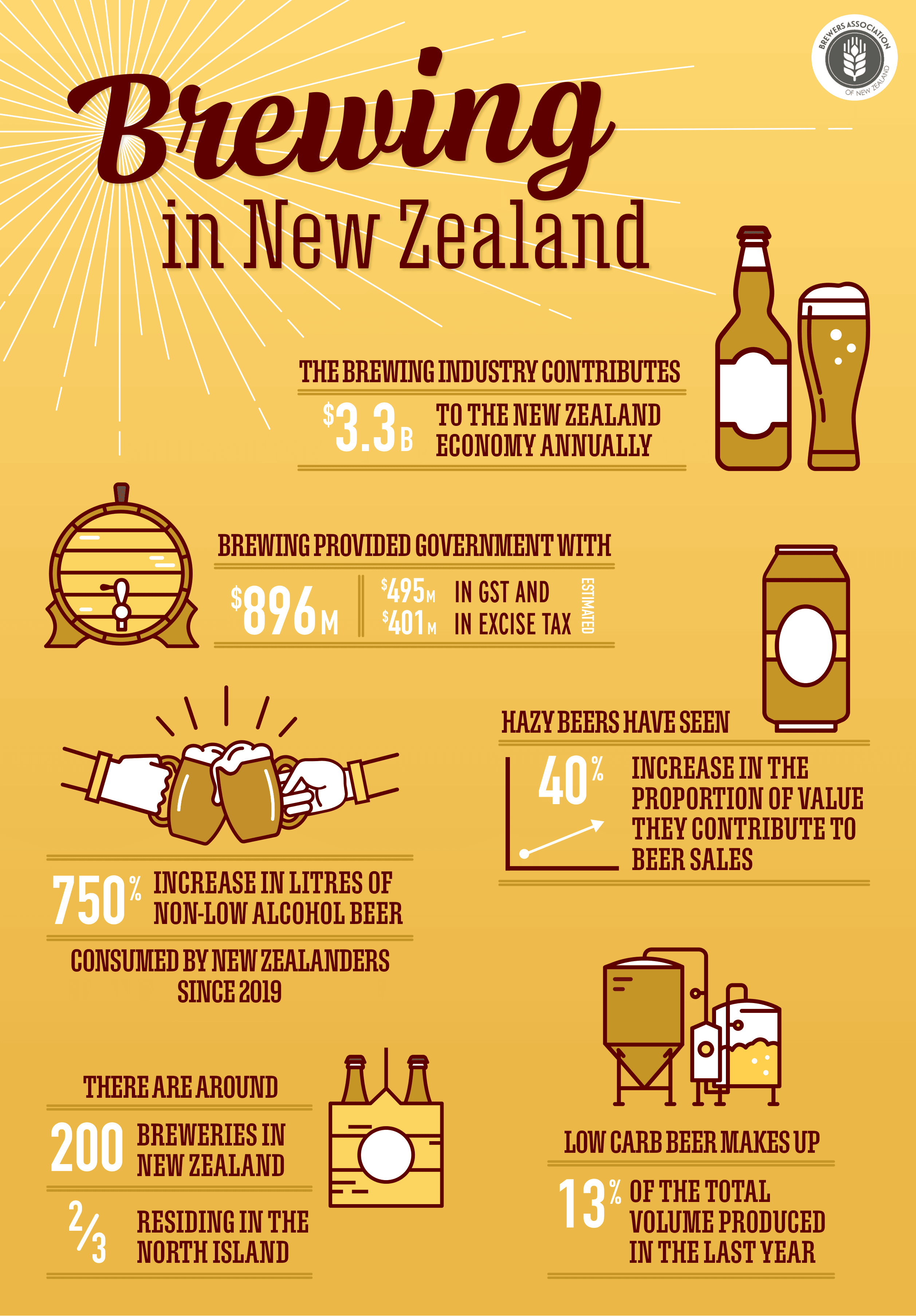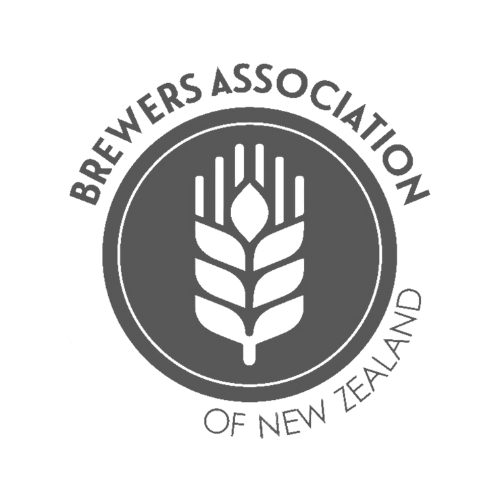ECONOMIC FOOTPRINT
2022 BREWING IN NEW ZEALAND REPORT
THE INFORMATION IN THIS REPORT WAS PRODUCED BY THE NEW ZEALAND INSTITUTE OF ECONOMIC RESEARCH WITH ADDITIONS FROM THE BREWERS ASSOCIATION OF NEW ZEALAND. IT HIGHLIGHTS THE POSITIVE ECONOMIC IMPACT THE BREWING INDUSTRY GENERATES, NOT ONLY FOR THE BREWERS THEMSELVES BUT THE SUPPLY CHAIN, GOVERNMENT TAX REVENUE AND THE WIDER ECONOMY.

THIS REPORT HIGHLIGHTS THE SIGNIFICANT FINANCIAL CONTRIBUTION THE INDUSTRY MAKES IN NEW ZEALAND, BENEFITTING THE PRODUCERS, SUPPLY CHAIN AND GOVERNMENT TAX REVENUE.
ECONOMIC ANALYSIS
The New Zealand brewing industry was valued at $3.3 billion in the year to September 2022. On-licence sales account for 64% of the estimated value of $2.1 billion, and off-licence sales account for the remaining 36% at $1.2 billion. It is clear from the significant portion of value that on-licence beer sales provide, that the negative impact on breweries and hospitality venues of continued lockdowns during 2020/21 had – especially given that this channel to market only comprises approximately 29% of the total volume sold.
Excise tax increased in line with inflation by 6.9% in 2022, the largest spike in 30 years In the year to November 2022, alcohol was responsible for $1.22 billion of excise taxes and duties. Beer alone contributed $401 million, including $324 million from domestic beer production and $77 million import duty. Beer sales contributed $495 million in GST $315 million from on-licence sales and $180 million from off-licences in the same period.
SUPPLY CHAIN CONCERNS
A range of international and domestic factors have constrained supply of key inputs for the brewing sector including difficulty with transportation logistics over the last 12 months.
There has been a significant decline in global barley production in 2021 and 2022 due to Russia threatening and later invading Ukraine. Russia is the world’s top barley producer, and Ukraine is the fifth largest. A continued conflict will severely hinder Ukraine’s production capabilities, and with trade sanctions remaining on Russian exports, this could lead to an acute shortage in barley supply. While New Zealand brewers rely heavily on domestic and Australian production, the constrained international supply has increased demand from traditional sources and led to price increases.
Since the Marsden Point oil refinery closed in early 2020, there have been ongoing shortages and rationing of domestic C02. C02 was a by-product in this process. The only other plant, Kapuni, owned by Todd energy in Taranaki has had several scheduled maintenance shutdowns. Before Christmas 2022, it was shut down temporarily due to safety concerns. It will reopen in February with limited production.
Because of this many breweries have been relying on more expensive and time delayed imported C02 or, where possible, using other gasses such as Nitrogen (this is used to purge tanks and lines for oxygen which has a detrimental effect on beer quality). Some breweries capture C02 from the fermentation process, but this does not meet all their needs.
Long term it seems domestic supply is not sustainable at these levels, and we expect that reliance on imported C02 will continue. This will increase the overall cost of production.
CONSUMER PREFERENCE & ALCOHOL CONSUMPTION
Beer sales volumes data from Stats NZ indicated that New Zealanders consumed more than 296 million litres of beer for the year to September 2022, up 5 million litres from the same period in 2021. Total consumption has remained at about 290 million litres annually since 2016; however, the amount consumed per adult has gradually declined.
New Zealand adults, on average, consume 1.75 standard drinks per week, with beer comprising 0.65. A steady decline in standard drinks consumed reflects New Zealanders’ shifting attitude towards low and no-alcohol beverages and health in general.
Since the start of 2019, the volume of low and no-alcohol beer consumed increased by 750%.
At the opposite end of the spectrum, high alcohol beer consumption also increased by 15% over the same period for beers with more than 5% alcohol content.
The amount of zero-alcohol beer being consumed can be seen in the 95% annual increase in the value of alcohol-free beers compared to the same period in 2021. Similarly, the market share of low-carb beers experienced significant growth in the year to November 2022. The change in the value of low-carb beer consumed in this period is up 38%, comprising 12% of the total market value and 13% of the total volume produced. The continued and rapid growth these types of beers are experiencing again reflects changing consumer preferences.
Lager still dominates beer sales in supermarkets and liquor stores in terms of styles at 65% of all beer sales; however, hazy beers are experiencing growth in the market. In the year to November 2022, hazy beers have seen about a 40% increase in the proportion of value they contribute to beer sales.
BREWERIES
Over the past couple of decades, the industry has seen a boom in the number of breweries. Depending on how you classify a New Zealand brewery, this number is about 200, with just under two-thirds residing in the North Island and one-third in the South.
The number has remained steady since the start of 2019 with the number of breweries closing being similar to those opening. From 2021 to 2022 beer manufacturing jobs increased from 2000 to 2150, largely concentrated in the Auckland region.
POST-PANDEMIC TRENDS
New Zealand beer consumption experienced a mild decline in total litres drank following the 2020/21 lockdowns relative to pre-COVID. In 2022, despite Auckland still being in traffic-light orange for Q1, beer consumption returned to pre-COVID levels. As consumer preference has shifted in a longer term to higher value premium and craft beer, the gradual decline in litres consumed annually has returned.

